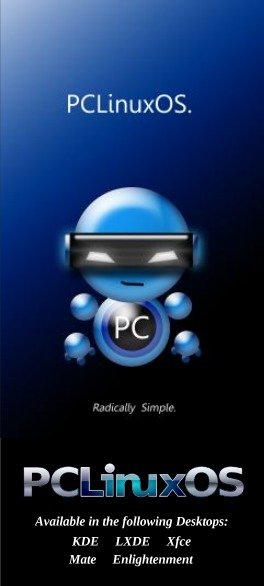| Previous
Page |
PCLinuxOS
Magazine |
PCLinuxOS |
Article List |
Disclaimer |
Next Page |
Windows Migration: Desktop Environments & Window Managers |
|
by agmg (Antonis Komis) Introduction Coming from Windows to Linux and looking for a distribution to begin your journey with, one of the first things you will probably notice is the difference between them. Different names, applications, software management, desktop environments... wait, what? What is a Desktop Environment and how can Linux provide so many choices? Windows and MacOS come with a pretty standard graphical user interface (GUI) that has very limited customization options. The term GUI describes the user interface that allows a user to interact with the computer using images rather than text commands. It typically consists of windows, icons, cursors, panels, toolbars, wallpapers and desktop widgets. While Windows and MacOS are designed and built around a specific GUI, Linux's GUI is completely separate from the operating system itself. The Linux desktop basically consists of four elements: X Window system (X11): is a computer software system and network protocol that provides a basis for graphical user interfaces (GUIs) and rich input device capability for networked computers. This is the foundation that allows for graphic elements to be drawn on the display. The X Window system builds the primitive framework that allows moving of windows, interactions with keyboard and mouse, and draws windows. This is required for any graphical desktop. X.org Server: X.org is the public, open-source implementation of the X window system. Since X.org is the most popular choice among Linux users, its ubiquity has led to making it an ever-present requisite for GUI applications, resulting in massive adoption from most distributions. Window Manager (WM): is system software that controls the placement and appearance of windows within a windowing system in a graphical user interface. It requires the X window system but not a desktop environment. Desktop Environment (DE): includes a Window Manager but goes beyond that concept. A desktop environment is a far more fully integrated system which includes a suite of applications and utilities that are tightly integrated and will provide a more complete graphical experience. A desktop environment will also include some form of panel that includes a system tray where small widgets can be placed for quick action or information. In general, Linux distributions provide different editions based on the desktop environment they use. This is the case also with PCLinuxOS. But, even though you may be using a specific desktop environment (which includes a specific window manager and a default set of integrated applications), there's nothing stopping you from installing more. You can choose a different desktop environment each time you login. The possibilities and combinations are endless! Don't be afraid to experiment and choose the right one for you. After all, this is one of the main advantages of Linux: freedom of choice! This article will try to cover most desktop environments and window managers that are available for Linux today. Some of them are available in PCLinuxOS (either as a different edition or as a package download) and some of them are not. Desktop Environments KDE 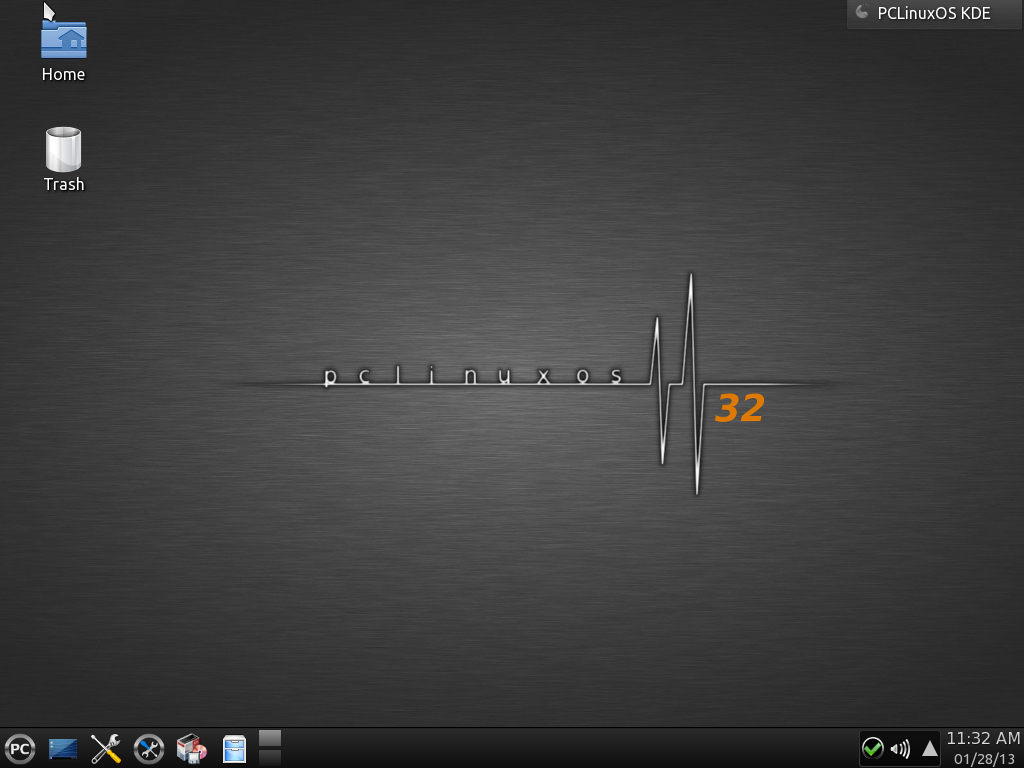 The default PCLinuxOS KDE Plasma Workspace. KDE is an international free software community developing a wide variety of cross-platform applications for communication, work, education and entertainment. KDE is mostly known among Linux and Unix users for its Plasma Desktop, an innovative desktop interface which aims to be user-friendly and highly customizable at the same time. Plasma Desktop also includes various workspace applications to aid with system configuration, running programs, or interacting with hardware devices. While the fully integrated KDE Workspaces are only available on Linux and Unix, some of these features are available on other platforms. Plasma Desktop currently offers two versions, known as Workspaces: the Desktop Workspace, which is designed for desktop PCs or larger laptops and the Netbook Workspace, which is aimed at netbooks but can also be used in Tablet PCs. 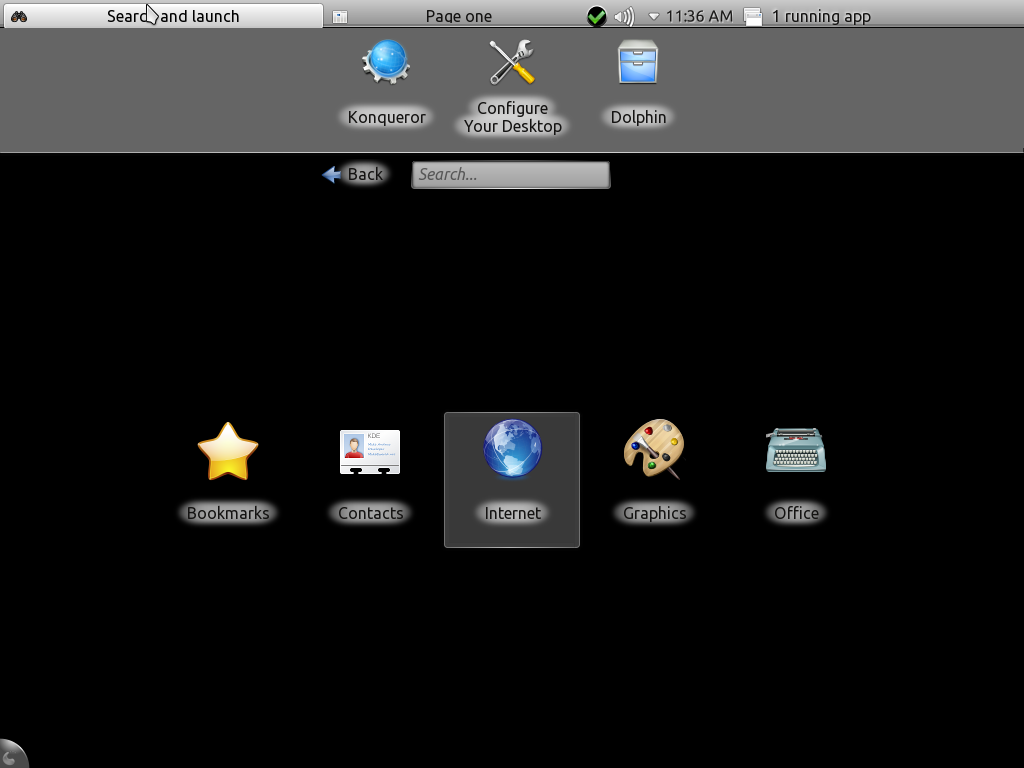 The Netbook Workspace of KDE. In addition to the workspace, KDE produces a number of key applications such as the Konqueror web browser, Dolphin file manager and Kontact, the comprehensive personal information management suite. Other well known applications provided by KDE are Calligra (full office suite), K3B (disk burning software), Amarok (music player), Dragon Player (video player), digiKam (image editor and organizer), Gwenview (image viewer) and Okular (document viewer). However, its list of applications includes many others, including those for education, multimedia, office productivity, networking, games and much more. Most applications are available on all platforms supported by the KDE Development. KDE also brings to the forefront many innovations for application developers. An entire infrastructure has been designed and implemented to help programmers create robust and comprehensive applications in the most efficient manner, eliminating the complexity and tediousness of creating highly functional applications. You can find more info on KDE from the official website: http://www.kde.org/ KDE Plasma Desktop is used in the main edition of PCLinuxOS as well as in the Full Monty edition, but Full Monty has a special, activity-focused, desktop layout and a lot of customizations and preinstalled applications. KDE can also be used alongside any other desktop environment by installing the package task-kde4 in Synaptic Package Manager. KDE uses KWin as its default window manager. Xfce 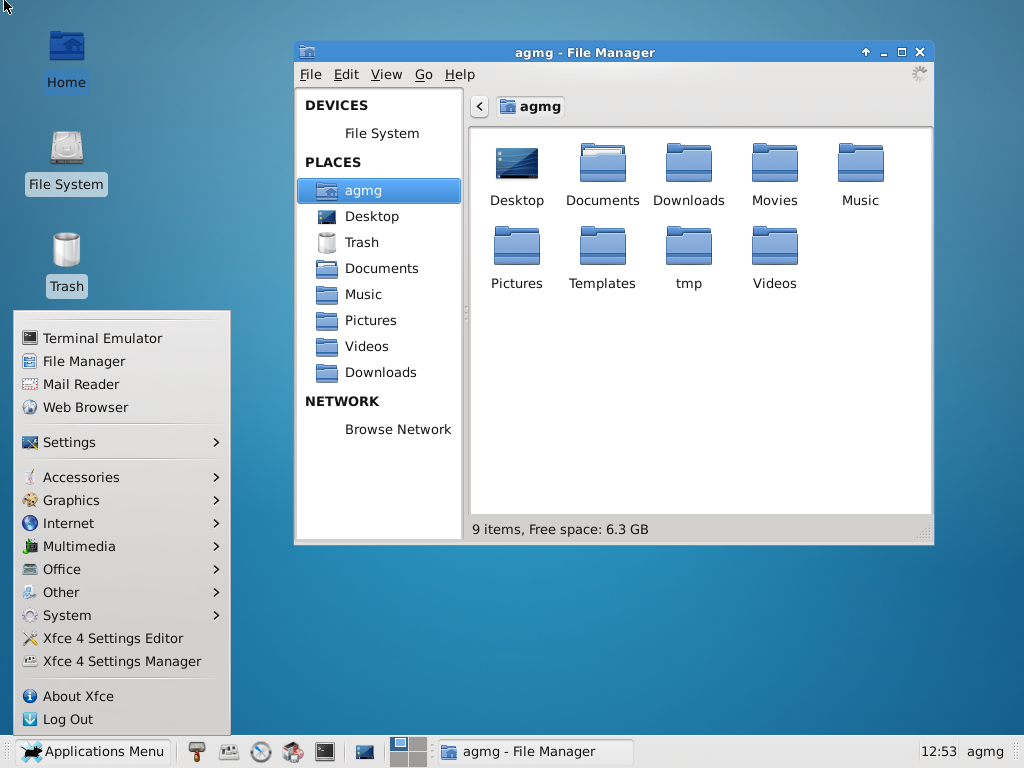 The default PCLinuxOS Xfce Desktop. Xfce is a lightweight desktop environment for UNIX-like operating systems. It aims to be fast and low on system resources, while still being visually appealing and user friendly. It consists of separately packaged components that together provide the full functionality of the desktop environment, but which can be selected in subsets to create the user's preferred personal working environment. Xfce is mainly used for its ability to run a modern desktop environment on relatively modest hardware. Xfce provides a handful of utilities for setting and customizing the desktop environment, as well as some key applications that add to the desktop environment's functionality, such as Midori, a lightweight web browser, Thunar file manager, Ristretto image viewer and Orage, a simple calendar application with reminders. You can find more info on Xfce from the official website: http://www.xfce.org/ Xfce is offered as a community-released edition of PCLinuxOS but can also be used in other editions by installing the package task-xfce4 in Synaptic Package Manager. Xfce uses Xfwm as its default window manager. LXDE 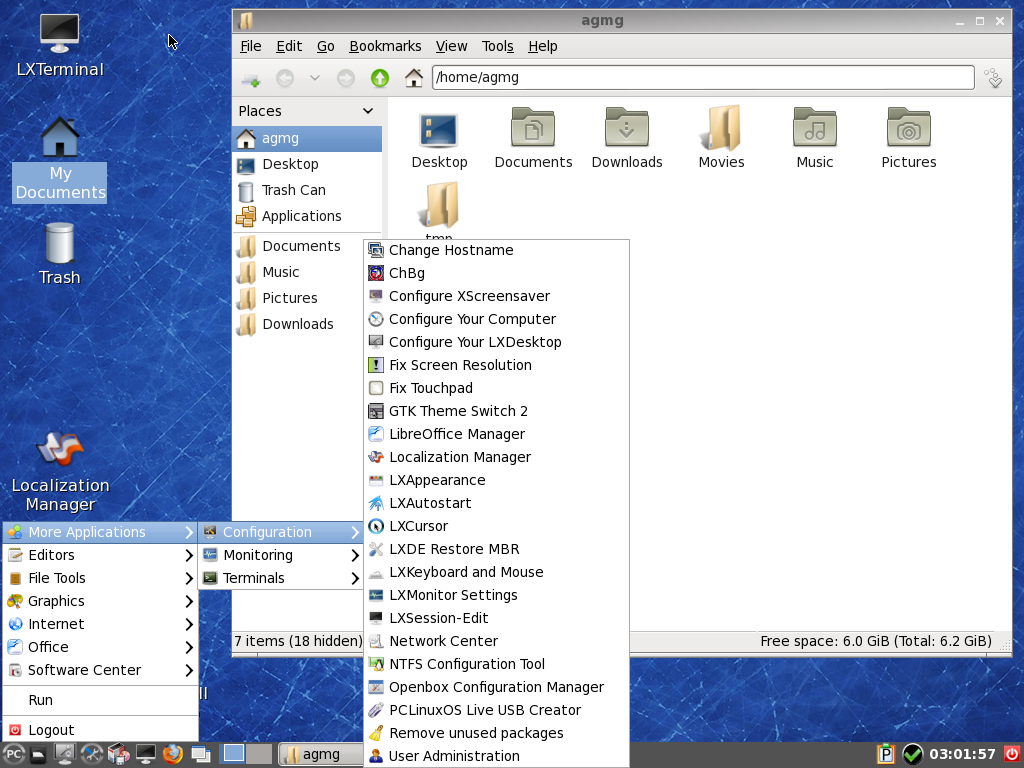 The default PCLinuxOS LXDE Desktop. The "Lightweight X11 Desktop Environment" is an extremely fast-performing and energy-saving desktop environment. Maintained by an international community of developers, it comes with a beautiful interface, multi-language support, standard keyboard short cuts and additional features like tabbed file browsing. LXDE uses less CPU and less RAM than other environments. It is especially designed for cloud computers with low hardware specifications, such as netbooks, mobile devices (e.g. MIDs) or older computers. Like the previous desktop environments, LXDE also integrates a bundle of applications and utilities that provide a complete user experience. You can find more info on LXDE from the official website: http://lxde.org/ LXDE is also offered as a community-released edition of PCLinuxOS but can also be used in other editions by installing the package task-lxde in Synaptic Package Manager. LXDE uses Openbox as its default window manager. GNOME GNOME project is an international community dedicated in making great software that anyone can use. It provides the GNOME desktop environment, consisting of the graphical user interface and several core applications (file manager, web browser, music and video players etc) and the GNOME development platform, an extensive framework for building applications that integrate into the rest of the desktop and mobile user interface. It was originally started at 1999 as an open-source alternative to KDE, which was using the (proprietary at that time) Qt toolkit. GNOME project is part of the GNU project (http://www.gnu.org/). 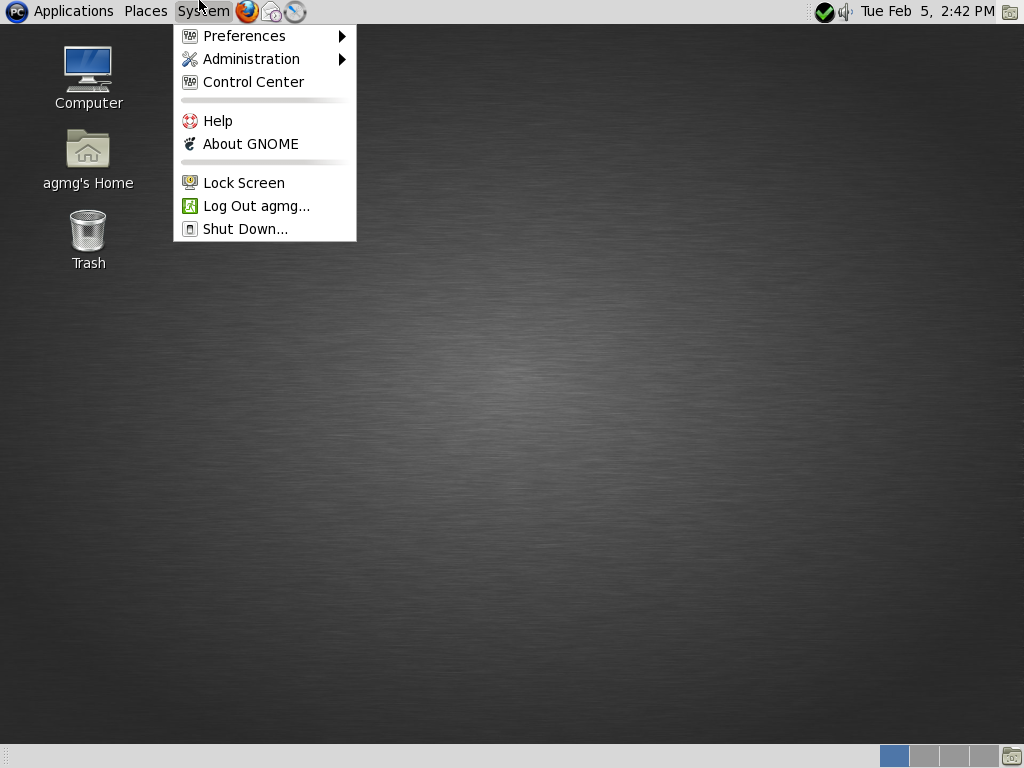 PCLinuxOS with GNOME 2.32 The first version of GNOME (desktop environment) was released on March 1999 but it wasn't until 2002 and the release of version 2.0 that GNOME became widely known and used in various Linux distributions. GNOME 2 has been one of the most popular and favourite desktop environments among Linux users and is always considered KDE's opposing force, (leading to great flame wars as to which one is the best). In 2011, GNOME project announced the release of version 3.0 (also known as GNOME Shell) and GNOME 2 stopped being maintained. 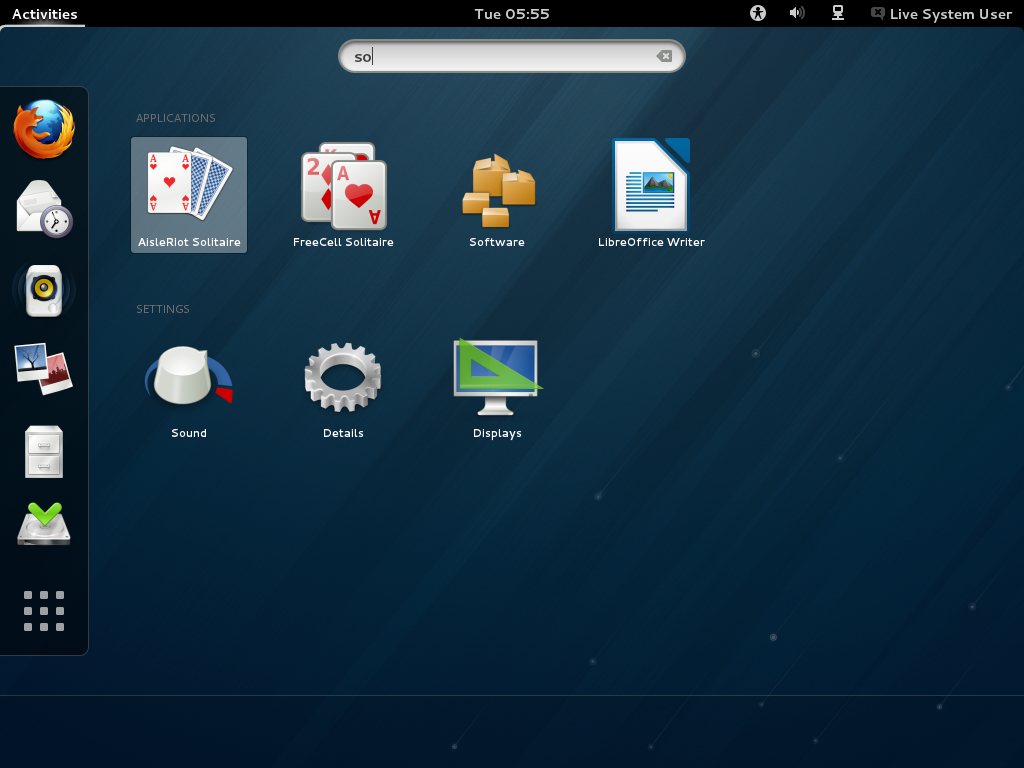 Gnome 3 The release of GNOME 3 created great controversy in the Linux community, mostly due to its move away from the traditional desktop concept. This controversy and the vast popularity of the older GNOME 2 (which was used for almost a decade) has led to the creation of two forks: MATE and Cinnamon. Additionally, in November 2012 it was announced that a classic mode would be implemented to GNOME 3 via a set of supported gnome-shell extensions. You can find more info about GNOME from the official website: http://www.gnome.org/ You can use GNOME 2 in PCLinuxOS by installing the package task-gnome from Synaptic Package Manager. GNOME 3 is not currently available in PCLinuxOS. GNOME 2 uses Metacity as its default window manager while GNOME 3 uses Mutter. MATE MATE is a desktop environment forked from the now-unmaintained code base of GNOME 2. The name derives from yerba mate, a species of holly native to subtropical South America used to prepare a beverage called mate. The renaming is necessary to avoid conflicts with GNOME 3 components. The project was started by an Arch Linux user and is supported by the Linux Mint developers. Several GNOME applications have also been forked under new names, like Caja (a file manager coming from Nautilus), Pluma (a text editor coming from Gedit), Atril (a document viewer like Evince) and many more. These applications are fully integrated to the desktop environment and can cover many of the user's needs. 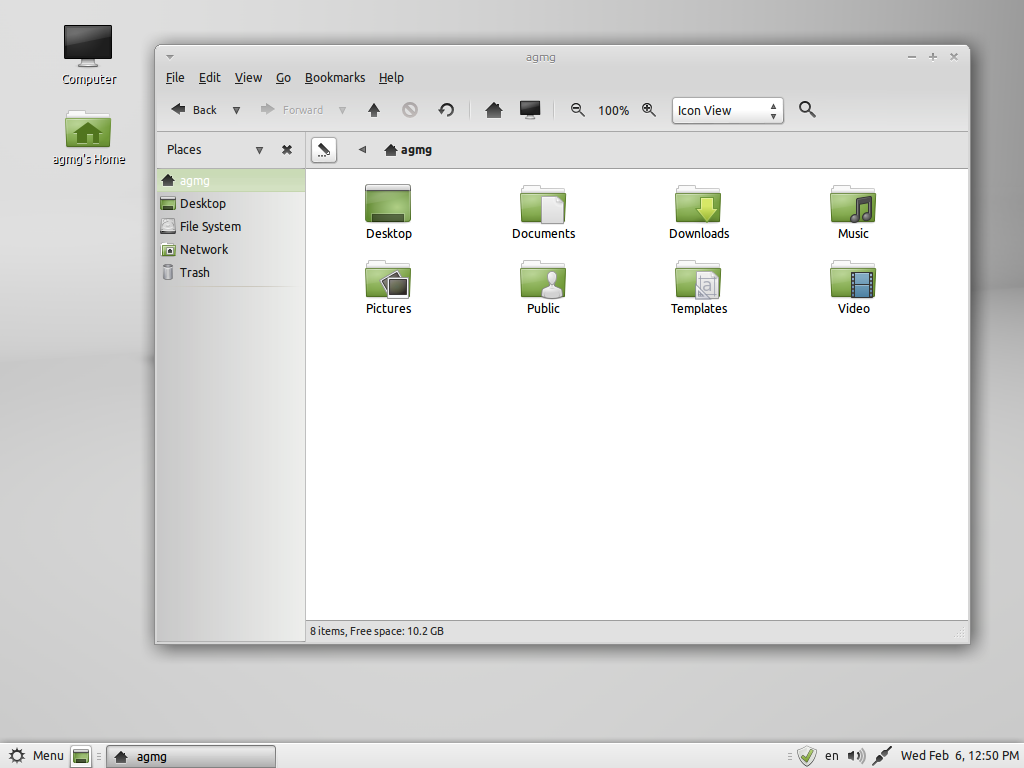 MATE on Linux Mint 14.1 You can find more info about MATE from the official website: http://mate-desktop.org/ MATE is currently availiable as a community-released edition of PCLinuxOS. MATE uses Marco, a fork of Metacity, as its default window manager. Cinnamon Cinnamon is a fork of GNOME 3 (GNOME shell), initially developed by (and for) Linux Mint. It attempts to provide a more traditional user environment like GNOME 2 using the technology of GNOME 3. It is Linux Mint's developers team vision of the GNOME interface for use in future releases of Linux Mint. Cinnamon is the team's second attempt to improve GNOME Shell's interface after Mint GNOME Shell Extensions (MGSE), a desktop layer that "sits on top" of the GNOME 3 desktop environment and delivers an interface that is more familiar to users of GNOME 2 as well as to users of previous Linux Mint distribution releases. 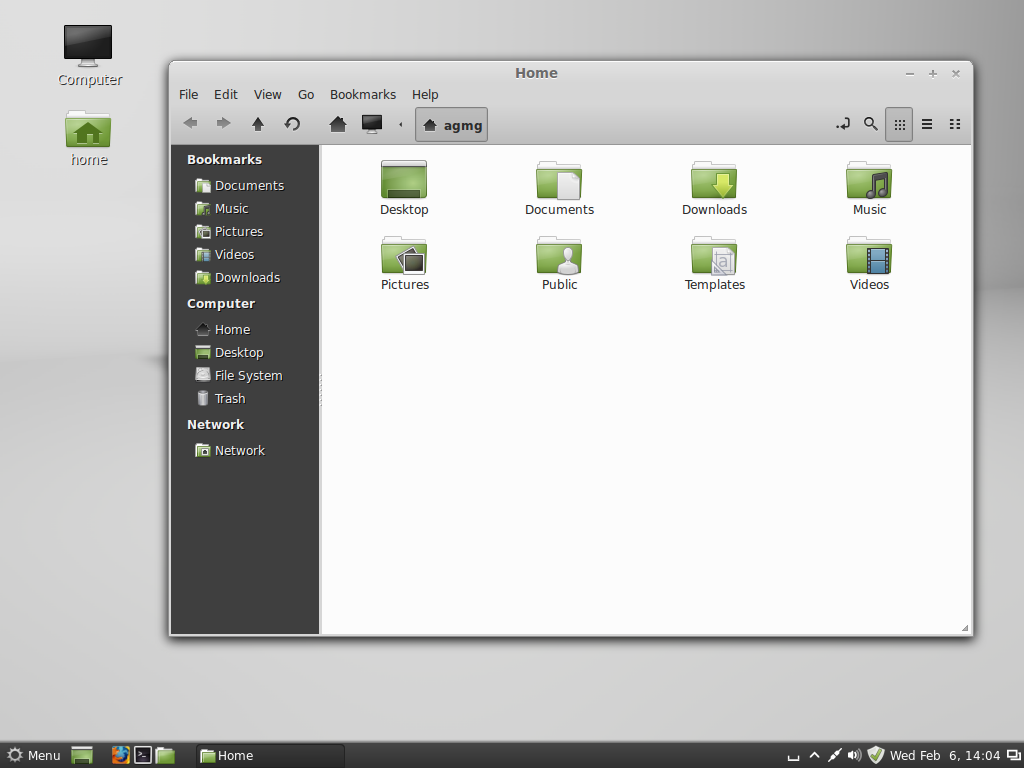 Cinnamon on Linux Mint 14.1 You can find more info about Cinnamon from the official website: http://cinnamon.linuxmint.com/ Cinnamon is not currently available in PCLinuxOS. Cinnamon uses Muffin, a fork of the GNOME 3 window manager Mutter, as its default window manager from Cinnamon 1.2 onwards. Unity Unity is not a complete desktop environment but a user interface for the GNOME desktop environment, developed by Canonical Ltd for its Ubuntu operating system. Unity debuted in the netbook edition of Ubuntu 10.10. It is designed to make more efficient use of space given the limited screen size of netbooks, including, for example, a vertical application switcher called the launcher. Unlike GNOME, KDE, Xfce or LXDE, Unity is not a collection of applications but is designed to use existing programs. 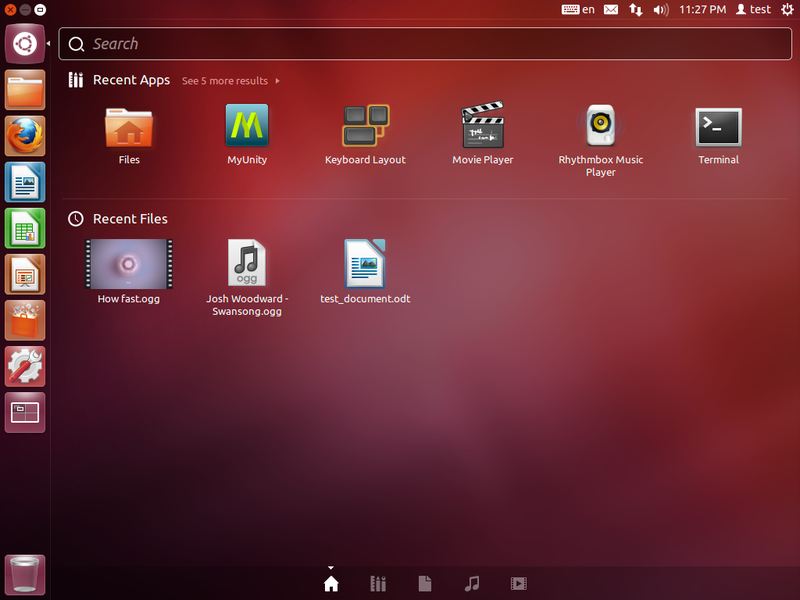 The Unity user interface You can find more info about Unity from the official website: http://unity.ubuntu.com/ Unity is only available with the Ubuntu operating system.EDE (Equinox Desktop Environment) EDE or Equinox Desktop Environment is a small desktop environment built to be responsive, light in resource usage and to have familiar look and feel. It runs on Linux, *BSD, Solaris, Minix, Zaurus and even on XBox. 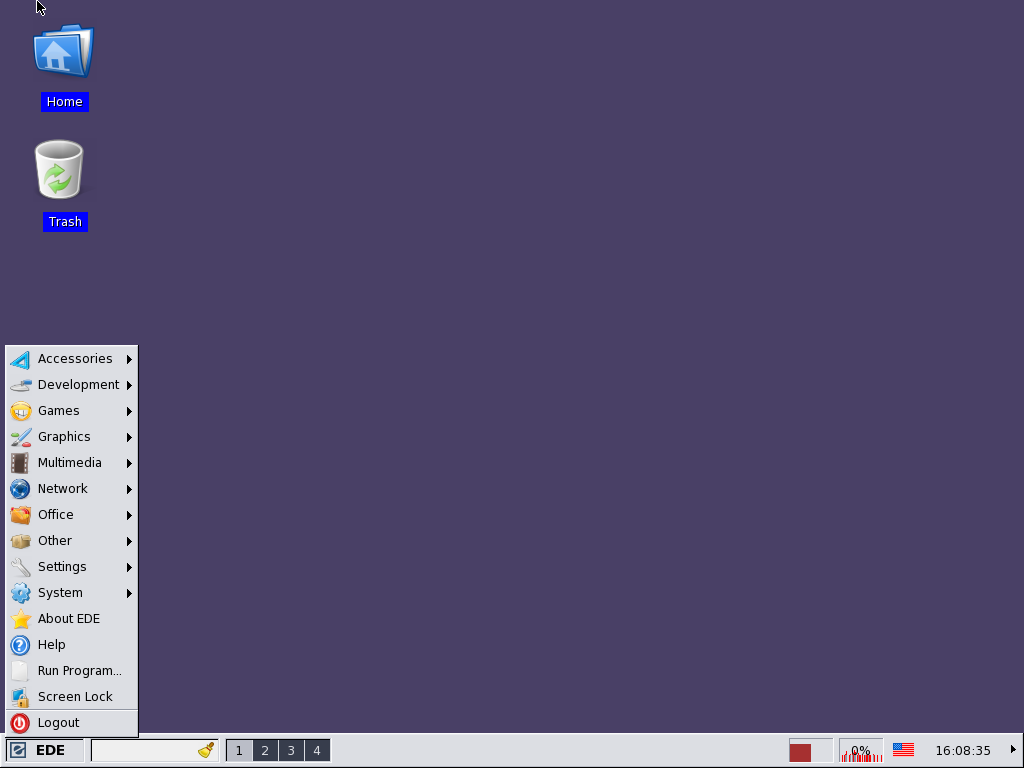 EDE on PCLinuxOS You can find more info about EDE in its official website: http://equinox-project.org/ EDE uses a modified version of FLTK (Fast Light Toolkit), a cross-platform C++ GUI toolkit that provides modern GUI functionality without the bloat and supports 3D graphics via OpenGL® and its built-in GLUT emulation. You can use EDE in PCLinuxOS by installing the package ede in Synaptic Package Manager. Razor-qt Razor-qt is an advanced, easy-to-use, and fast desktop environment based on Qt technologies. It has been tailored for users who value simplicity, speed, and an intuitive interface. Unlike most desktop environments, Razor-qt also works fine with weak machines. Razor-qt is a relatively new project but already contains the key components of a desktop environment: panel, desktop, application launcher, settings center, sessions. 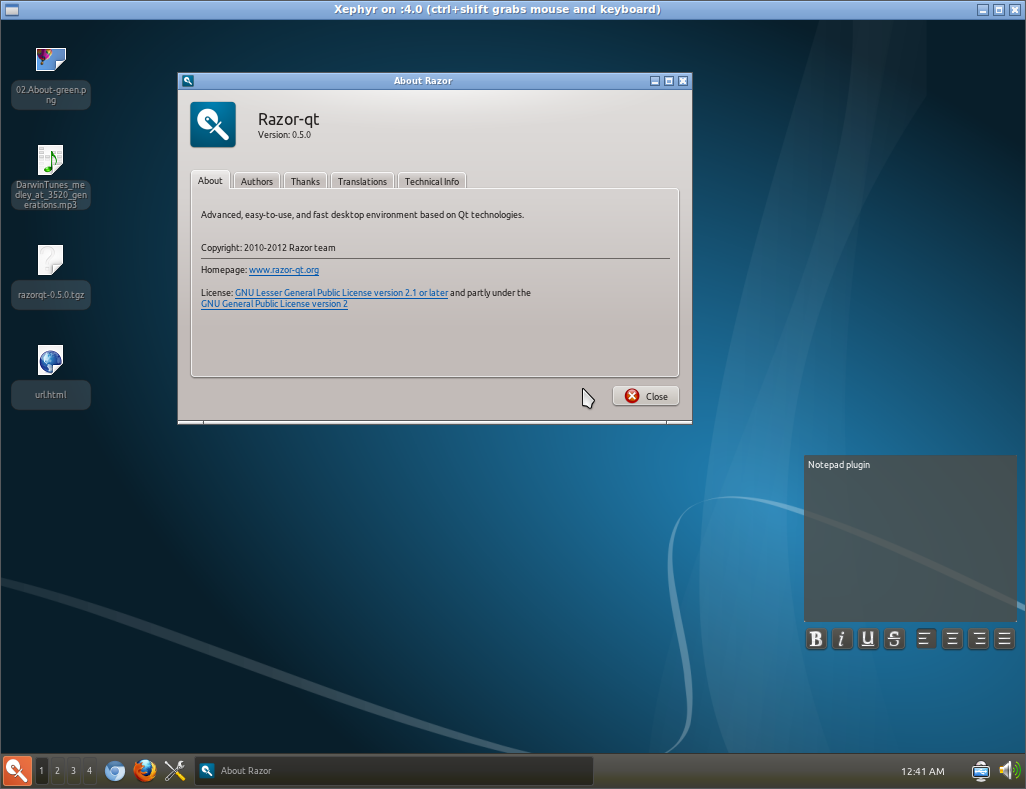 Razor-qt 0.5.0 default theme. You can find more info about Razor-qt from the official website: http://razor-qt.org/ Razor-qt is available in PCLinuxOS by installing the package razor-qt in Synaptic Package Manager. Razor-qt doesn't have its own window manager but works with any modern window manager such as Openbox, fvwm2 or Kwin. Trinity
Trinity Desktop Environment is a computer desktop environment for Unix-like operating systems with a primary goal of retaining the overall KDE 3.5 computing style, as well as polishing off any rough edges that were present as of KDE 3.5.10. KDE 3.5 was the last version of the KDE 3.x series before 4.x was released. Timothy Pearson, Kubuntu release manager for KDE 3.5, has released Trinity to pick up where the KDE 3.5 left. This fork keeps the KDE 3.5 branch alive and releases continuing bugs fixes, additional features, and compatibility with recent hardware. Trinity is packaged for Debian, Ubuntu, Red Hat and various other distributions.  You can find more info about Trinity from the official website: http://www.trinitydesktop.org/ Trinity is currently availiable as a community-released edition of PCLinuxOS. Trinity uses its own window manager, called the TDE Window Manager. Window Managers Window managers for X Window system, fall under the following categories: Compositing window managers let all windows be created and drawn separately and then put together and displayed in various 2D and 3D environments. The most advanced compositing window managers allow for a great deal of variety in interface look and feel, and for the presence of advanced 2D and 3D visual effects. Stacking window managers draw all windows in a specific order, allowing them to overlap, using a technique called painter's algorithm. Stacking window managers allow windows to overlap by drawing them one at a time. Tiling window managers "tile" the windows so that none are overlapping. They usually make very extensive use of key-bindings and have less (or no) reliance on the mouse. Tiling window managers may be manual, offer predefined layouts, or both. Most tiling window managers allow you to "stack" windows (dynamic tiling window managers). Compositing Window Managers KWin KWin is an integral part of the KDE Software Compilation (KDE SC) but can also be used on its own on other desktop environments. 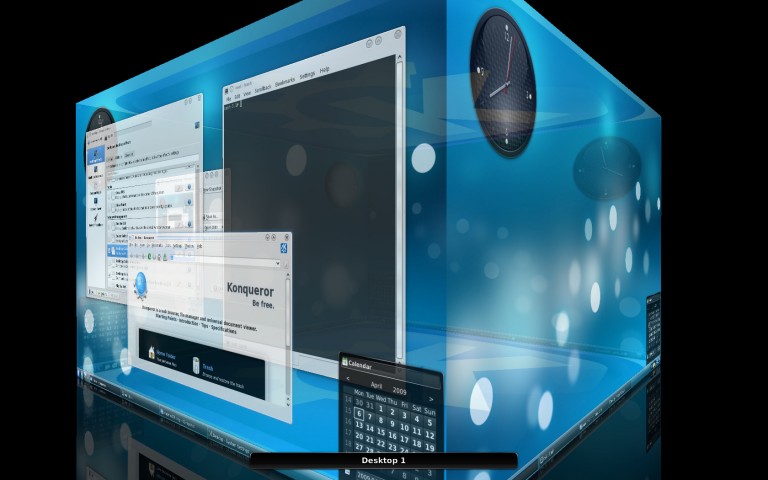 Desktop Cube, one of KWin's most impressive effects. KWin has an extensive support for themes, window decorations and 2D & 3D effects. Supports compositing through various compositing backends that currently include XRender, OpenGL 1.x, OpenGL 2.x, and OpenGL ES 2.0. It is designed to be modest on hardware resources and completely configurable and customizable. More info about KWin can be found at KDE UserBase Wiki: http://userbase.kde.org/KWin KWin is the default window manager used in the KDE and FullMonty Edition of PCLinuxOS. It can also be used on other desktop environments by installing the package kwin through Synaptic Package Manager. Compiz
Compiz is a compositing window manager that uses 3D graphics acceleration via OpenGL. It provides various new graphical effects and features on any desktop environment, including GNOME and KDE. Compiz has a flexible plugin system and it is designed to run well on most graphics hardware. 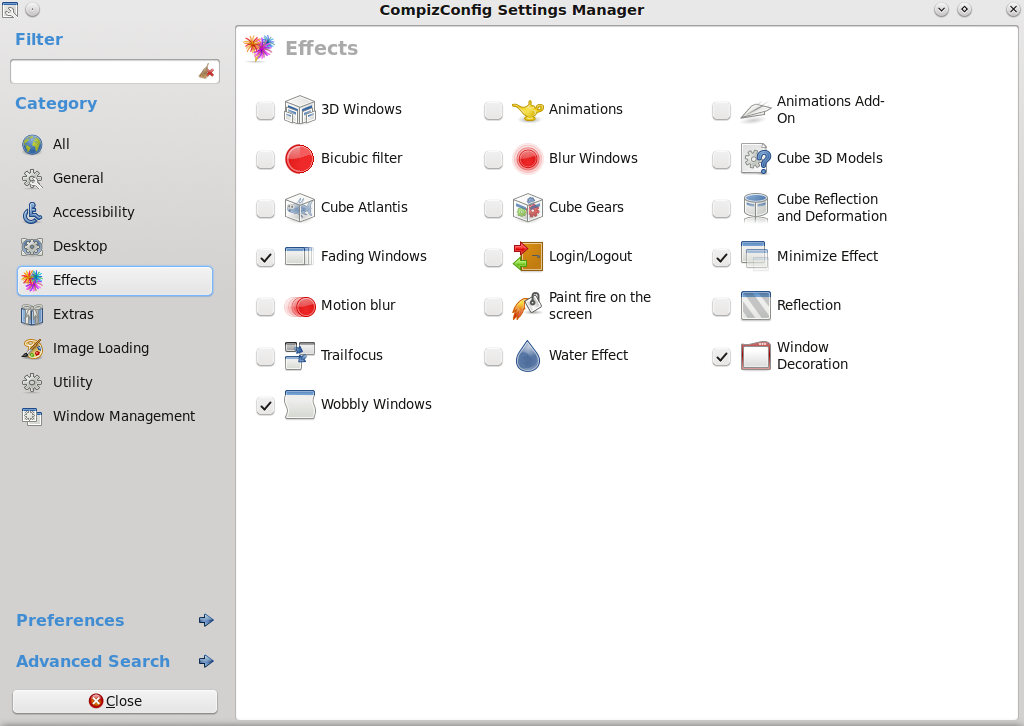 Compiz settings window under KDE More info about Compiz from the official website: http://www.compiz.org/ Compiz can be easily installed through Synaptic Package Manager using the compiz package. Your graphics adapter must support OpenGL to use it. Xfwm Xfwm is part of the Xfce Desktop Environment. Xfwm supports themes for window borders, buttons and title bars and has its own integrated compositing manager. Xfwm keeps pace with the general Xfce philosophy of being lightweight and visually appealing at the same time. 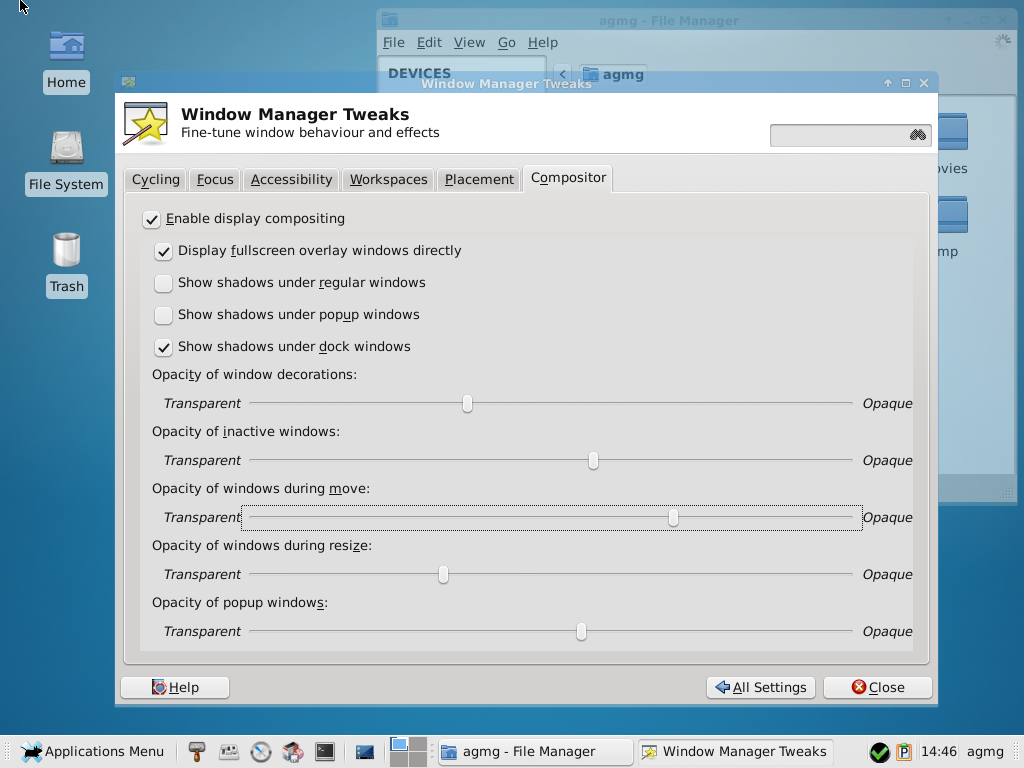 Xfwm's compositing in action More info about Xfwm at Xfce4 official documentation website: http://docs.xfce.org/xfce/xfwm4/start As with previous window managers, Xfwm can be used on most desktop environments by installing the package xfwm4 through Synaptic Package Manager. The package xfce4-settings (Settings Manager) should also be installed to provide GUI management for Xfwm. Mutter Mutter is the default window manager used in GNOME 3 which uses the Clutter graphics library and supports numerous visual effects. It is a remake of the old Metacity used in GNOME 2. Mutter can function as standalone window manager application for GNOME-like desktops and is extensible with plugins. Developers of Linux Mint, have forked Mutter and created Muffin, to use for their Cinnamon operating system. Latest versions of Mutter offer compositing capabilities and visual effects through Clutter's OpenGL support. Those versions are built using GTK+ 3.x libraries and are not currently available in PCLinuxOS. An older version of Mutter which uses GTK+ 2.x libraries can be used on many desktop environments by installing the package mutter through Synaptic Package Manager. Stacking Window Managers Afterstep AfterStep is a stacking window manager, originally based on the look and feel of the NeXTStep interface, it provides end users with a consistent, clean, and elegant desktop. The goal of AfterStep development is to provide for flexibility of desktop configuration, improving aesthetics, and efficient use of system resources. Some of the distinguishing features of AfterStep compared to other window managers are its low usage of resources, stability and configurability. 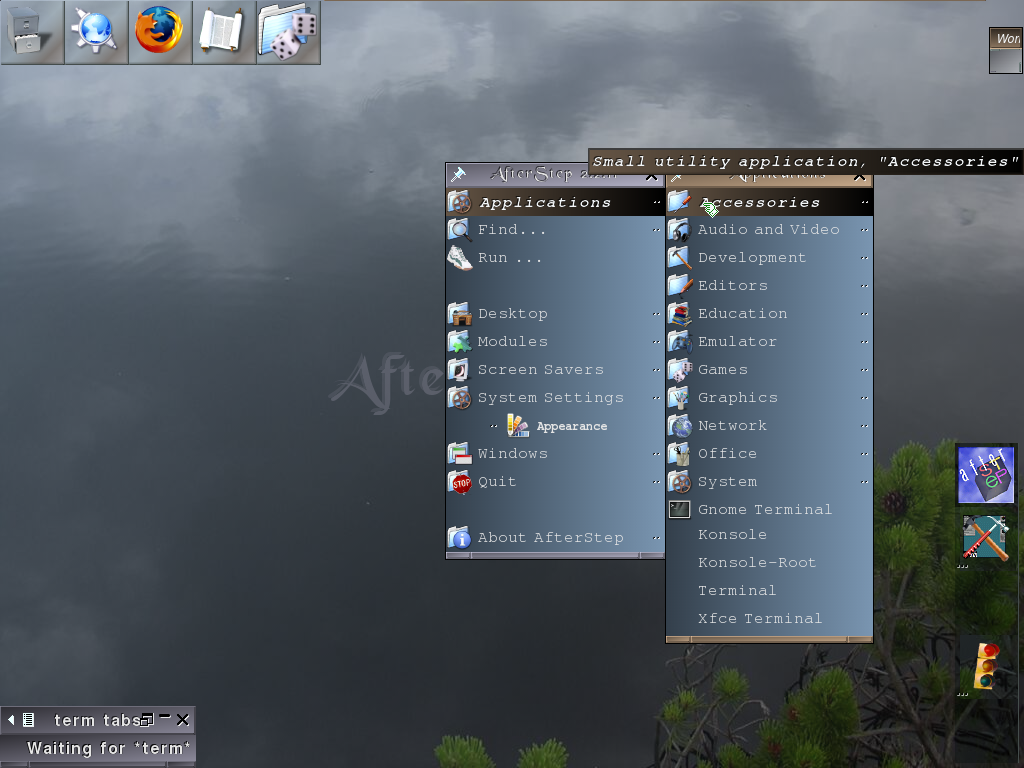 Afterstep on PCLinuxOS You can find more info about Afterstep from the official website: http://www.afterstep.org/
Afterstep is available in PCLinuxOS by installing the package Window Maker Window Maker is an X11 window manager originally designed to provide integration support for the GNUstep Desktop Environment. In every way possible, it reproduces the elegant look and feel of the NEXTSTEP user interface. It is fast, feature rich, easy to configure, and easy to use. It is also free software, with contributions being made by programmers from around the world. Window Maker has a stable user interface since many years and comes with a powerful GUI configuration editor called WPrefs, which removes the need to edit text-based config files by hand. It supports running dockapps which make everyday tasks such as monitoring system performance and battery usage, mounting devices or connecting to the internet very easy. 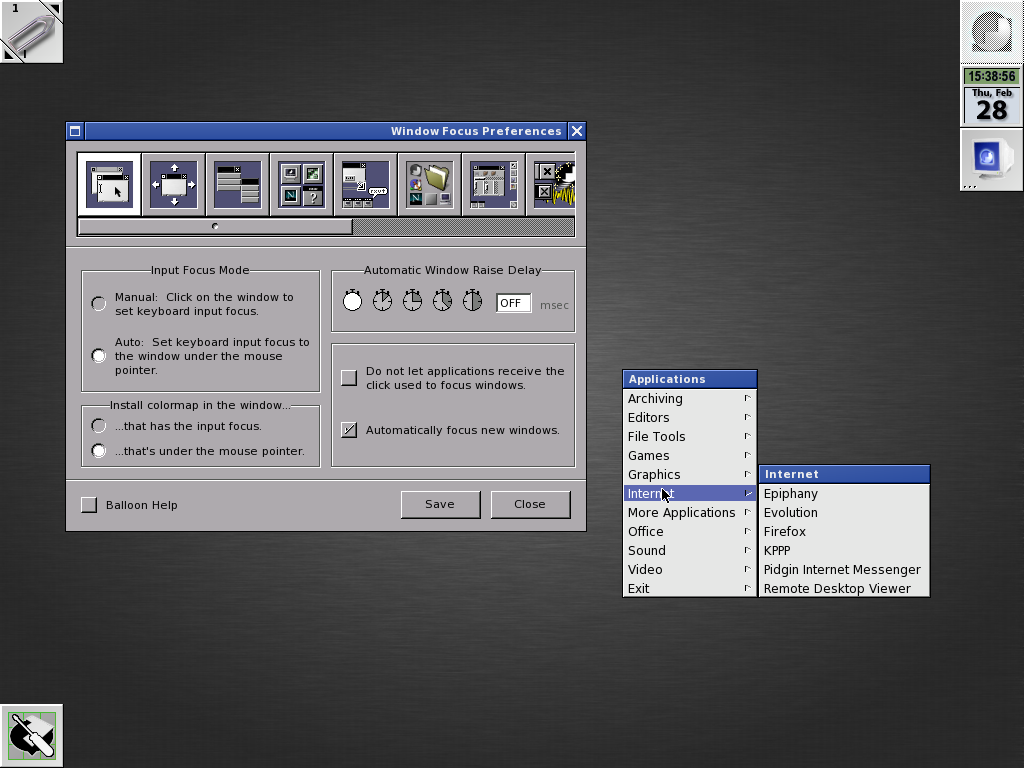 Window Maker on PCLinuxOS You can find more info about Window Maker from the official website: http://windowmaker.org/ You can use Window Maker in PCLinuxOS by installing the package Windowmaker through Synaptic Package Manager. Enlightenment (E) Enlightenment, also known simply as E, is a lean, fast, modular and very extensible stacking window manager for X11, which can be used alone or in conjunction with a desktop environment such as GNOME or KDE. Ιt is classed as a "desktop shell" providing the things you need to operate your desktop (or laptop), but is not a whole application suite. Enlightenment is known as a Window Manager, but provides most of the functionality found in much more resource-hungry Desktop Environments. Beyond the window manager, the Enlightenment project also provides a whole suite of libraries for creating beautiful user interfaces with much less work than doing it the old fashioned way and fighting with traditional toolkits. 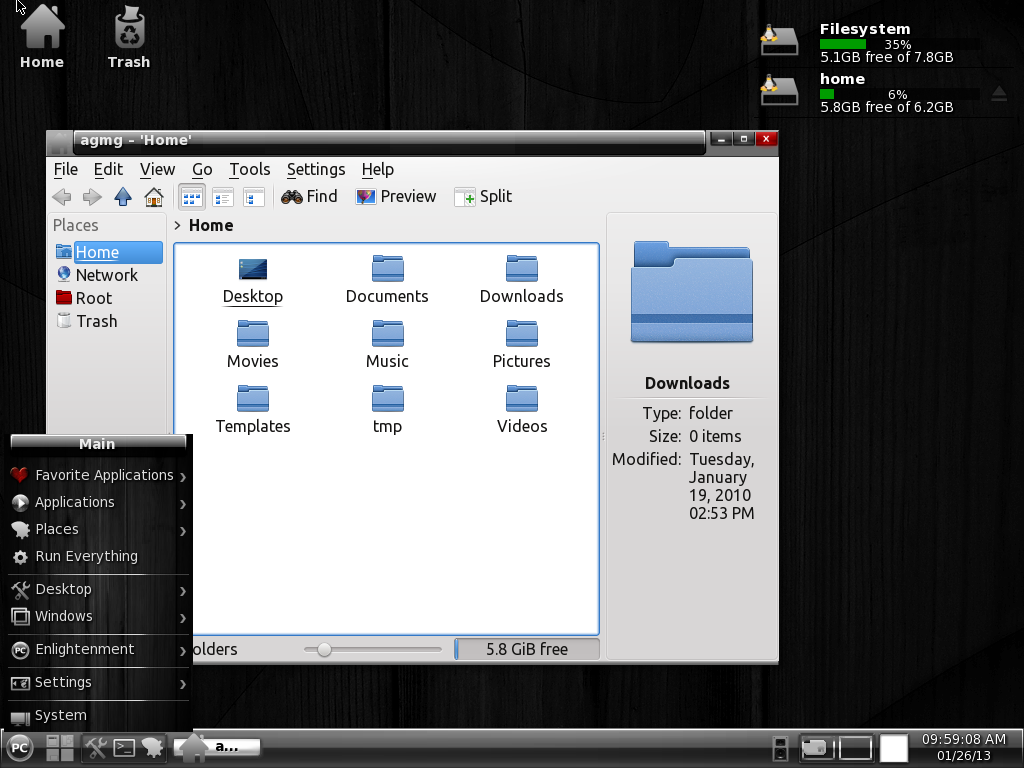 Enlightenment over KDE in PCLinuxOS You can find more info about Enlightenment from the official website: http://www.enlightenment.org/ Enlightenment is available in PCLinuxOS by installing the package task-enlightenment through Synaptic Package Manager. Blackbox/Fluxbox Blackbox is a fast, lightweight window manager built with C++. Blackbox has specific design goals, and some functionality is provided only through other applications. It's designed to be fairly small and minimal, making it particularly suited to less powerful computers. It doesn't support images, other than generated gradients, but it does support multiple desktops and is NetWM compliant, making it compatible with KDE and GNOME.  Blackbox on PCLinuxOS Fluxbox started as a fork of Blackbox 0.61.1, with the same aim to be lightweight. Its user interface has only a taskbar, a pop-up menu accessible by right-clicking on the desktop and minimal support for graphical icons. All basic configurations are controlled by text files, including the construction of menus and the mapping of key bindings. Fluxbox has high compliance to the Extended Window Manager Hints specification. 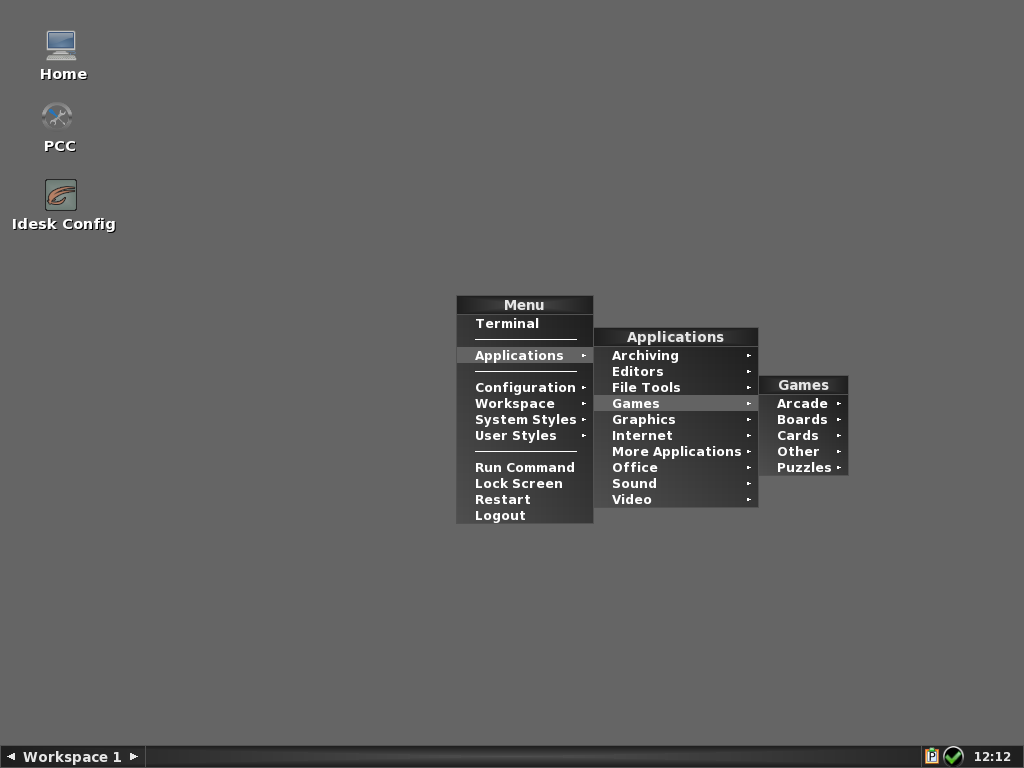 Fluxbox on PCLinuxOS
More info about those two window managers can be found from the official websites: Openbox Openbox is a lightweight and highly configurable window manager with extensive standards support. Originally derived from Blackbox 0.65.0, Openbox has now been totally rewritten in the C programming language and since version 3.0 is not based upon any code from Blackbox. It is the default window manager of the LXDE desktop environment. Openbox uses the *box visual style and can be fully customized with the use of themes. Its high configurability means that it can suit almost any user's needs. It can be kept simple but can also be tweaked in almost every aspect, completely changing the way the users interact with their desktops. Openbox can run inside other desktop environments but can also be used without any desktop environment or session manager. 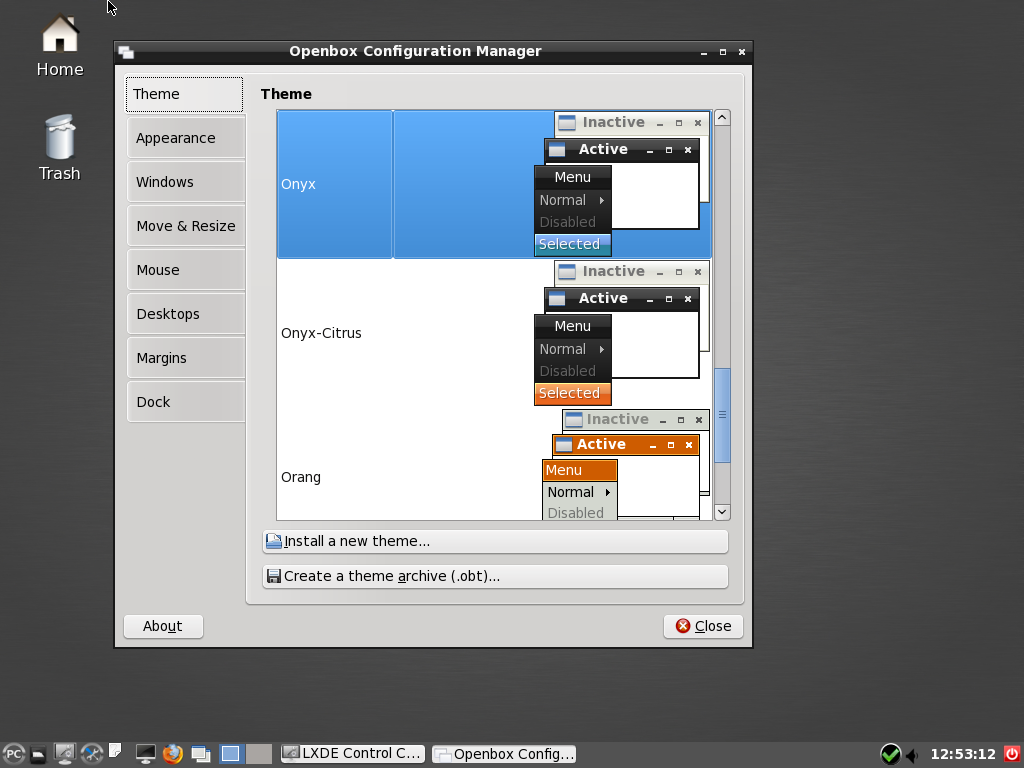 Openbox configuration under LXDE You can find more info about Openbox from the official website: http://openbox.org/wiki/Main_Page You can use Openbox in PCLinuxOS by installing the package openbox through Synaptic Package Manager. IceWM IceWM is a stacking window manager for the X Window System graphical infrastructure, written by Marko Maček. It was coded from scratch in C++ and is released under the terms of the GNU Lesser General Public License. It is relatively lightweight in terms of memory and CPU usage, and comes with themes that allow it to imitate the GUI of Windows 95, OS/2, Motif, and other graphical user interfaces. IceWM is meant to excel in look and feel while being lightweight and customizable. IceWM can be configured from plain text files stored in a user's home directory, making it easy to customize and copy settings. IceWM has an optional, built-in taskbar with menu, tasks display, network and CPU meters, mail check and configurable clock. Official support for GNOME and KDE menus was previously available as a separate package. In recent IceWM versions, support for them is embedded. External graphical programs for editing configuration and menu exist. 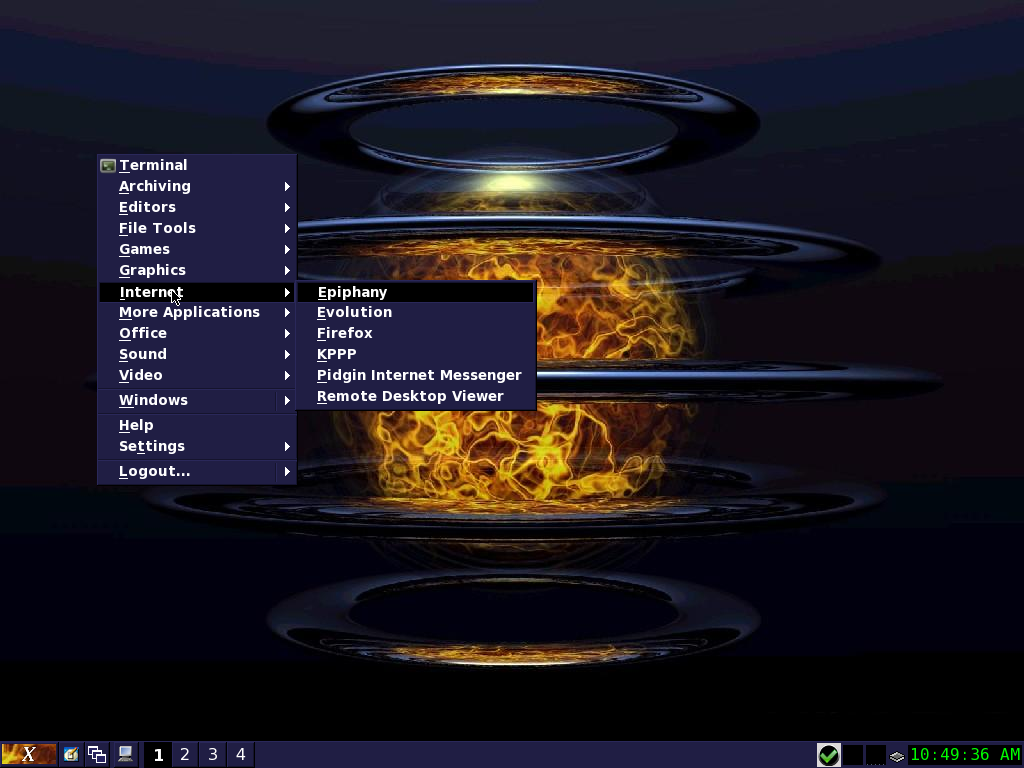 IceWM on PCLinuxOS You can find more info about IceWM from the official website: http://www.icewm.org/ IceWM can be used in PCLinuxOS by installing the package icewm through Synaptic Package Manager. Metacity Metacity was the window manager used by default in the GNOME 2 desktop environment until GNOME 3, where it was replaced by Mutter. A fork, renamed to "Marco", is still being actively developed and maintained as part of the MATE desktop environment, itself a fork of GNOME 2 as a whole. The development of Metacity was started by Havoc Pennington and it is released under the GNU General Public License. Before the introduction of Metacity in GNOME 2.2, GNOME used Enlightenment and then Sawfish as its window manager. Although Metacity is part of the GNOME project and designed to integrate into the GNOME desktop, it does not require GNOME to run, and GNOME can be used with different window managers provided that they support the part of the ICCCM specification that GNOME requires. Metacity uses the GTK+ graphical widget toolkit to create its user interface components, which makes it themeable and makes it blend in with other GTK+ applications. You can find more info about Metacity in this blog: http://blogs.gnome.org/metacity/2007/12/23/start-reading-here/ Metacity can be used either in conjunction with GNOME 2 Desktop Environment or by installing the package metacity through Synaptic Package Manager. twm Twm (Tab Window Manager, or sometimes Tom's Window Manager, after the principal author Tom LaStrange) provides titlebars, shaped windows, several forms of icon management, user-defined macro functions, click-to-type and pointer-driven keyboard focus, and user-specified key and pointer button bindings. It has, however, been left behind by more recent window managers, making it something of mainly historical interest. It was for some time the only real choice of window manager, after taking over from the very simplistic uwm. Nearly every window manager since has borrowed heavily from it, either directly, or indirectly through other window managers, such as fvwm. 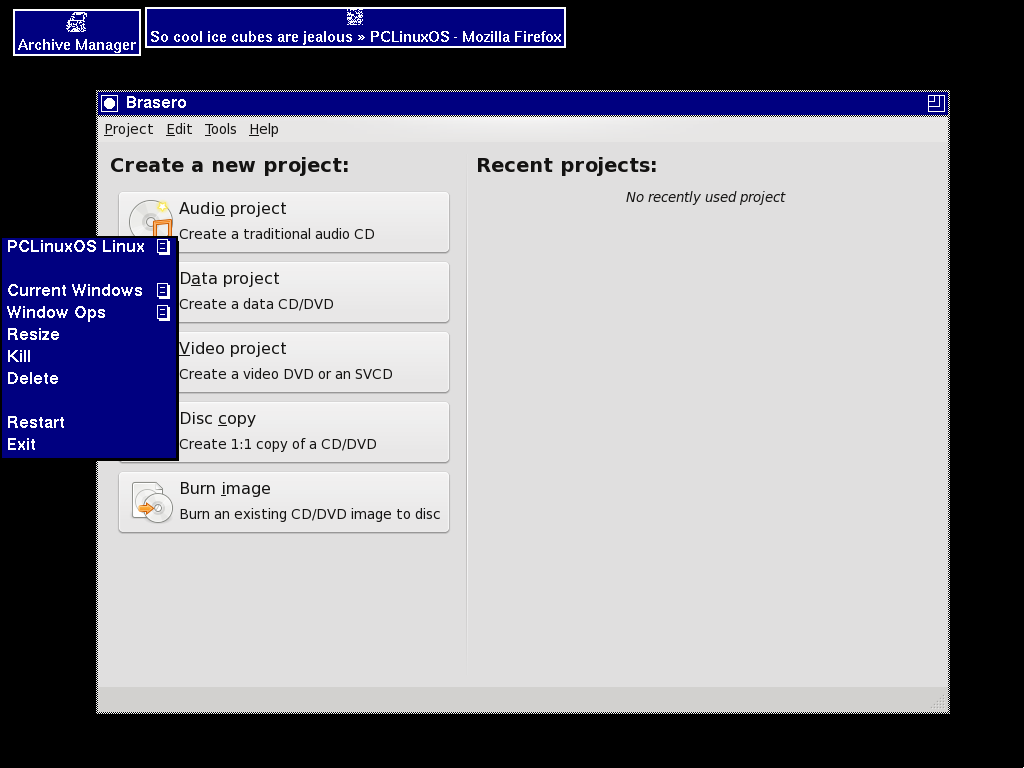 twm on PCLinuxOS The source code is no longer developed, but old TWM archives for various releases of X are available. You can find more info on LaStrange's home page: http://www.lastrange.com/work/ twm can be used in PCLinuxOS by installing the package twm through Synaptic Package Manager. Fvwm Fvwm, a stacking window manager developed by Robert Nation, was once dominant in the window manager stakes, especially in the Linux community. It borrows heavily from Tom LaStrange's famous twm window manager, which was the first ICCCM-compliant window manager to be written. It requires some effort to learn to use it well, since it is almost entirely configured by editing configuration files with a text editor. But those who persist end up with a desktop environment that works exactly the way they want it to work. Development is active, and support is excellent. Fvwm was designed to minimize memory consumption, provide a 3-D look (similar to Motif's mwm) and provide a simple virtual desktop. Functionality can be enhanced by the use of various modules.  Fvwm on PCLinuxOS You can find more info about fvwm from the official website: http://www.fvwm.org/ Fvwm can be used in PCLinuxOS by installing the package fvwm through Synaptic Package Manager. PekWM PekWM is a stacking window manager for the X Window System, written in C++ by Claes Nästen, and highly configurable. The code is based on the aewm++ window manager, but it has evolved enough that it no longer resembles aewm++ at all. It also has an expanded feature-set, including window grouping (similar to Ion3, PWM, or Fluxbox), auto properties, xinerama and keygrabber that supports keychains, and much more. 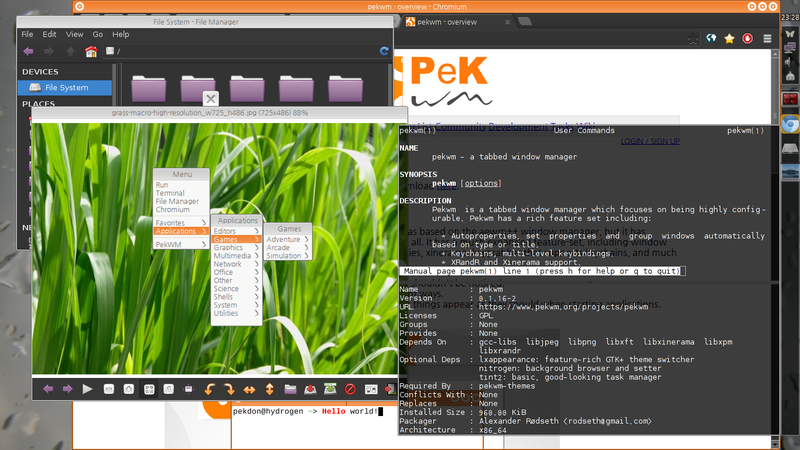 A screenshot of PekWM in action. You can find more info about PekWM from the official website: https://www.pekwm.org/projects/pekwm PekWM can be used in PCLinuxOS by installing the package pekwm through Synaptic Package Manager. Tiling and Dynamic Tiling Window Managers. wmii wmii (window manager improved²) is a tiling window manager that supports classic and tiling window management with extended keyboard, mouse, and filesystem based remote control. It replaces the workspace paradigm with a new tagging approach. The window manager offers extensive configuration through a virtual filesystem. In its latest release, wmii supports Xinerama and ships its own keyboard-based menu program called wimenu, featuring history and programmable completion. 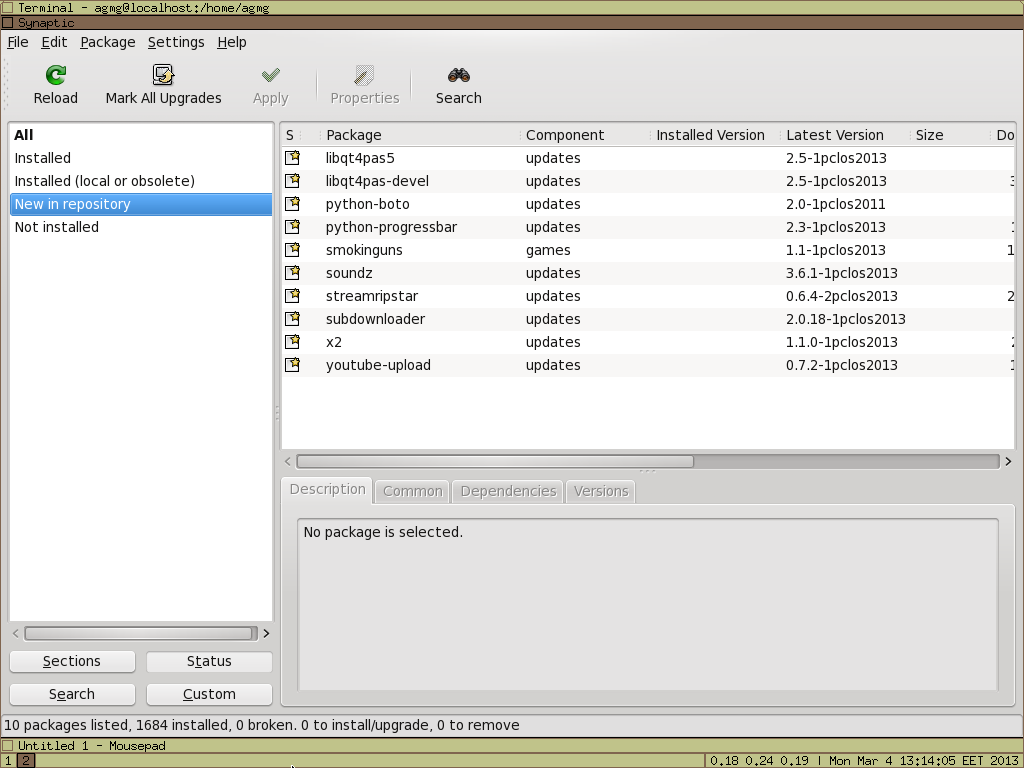 wmii on PCLinuxOS More info about wmii from its page on Google Project Hosting: https://code.google.com/p/wmii/ wmii can be used in PCLinuxOS by installing the package wmii through Synaptic Package Manager. Ratpoison Ratpoison is a minimalistic window manager which can be controlled 100% through the keyboard. The name "Ratpoison" reflects its major design goal: it lets the user manage application windows without using a mouse. Unlike other tiling window managers like Ion, ratpoison completely ignores the mouse, and avoids window decorations as much as possible. It behaves like the terminal-multiplexer GNU screen. Every window is maximized to fit the whole screen, no pixel is wasted on stuff like borders or other decoration. The user can also "split" the screen into two or more frames in order to display more than one window at a time. 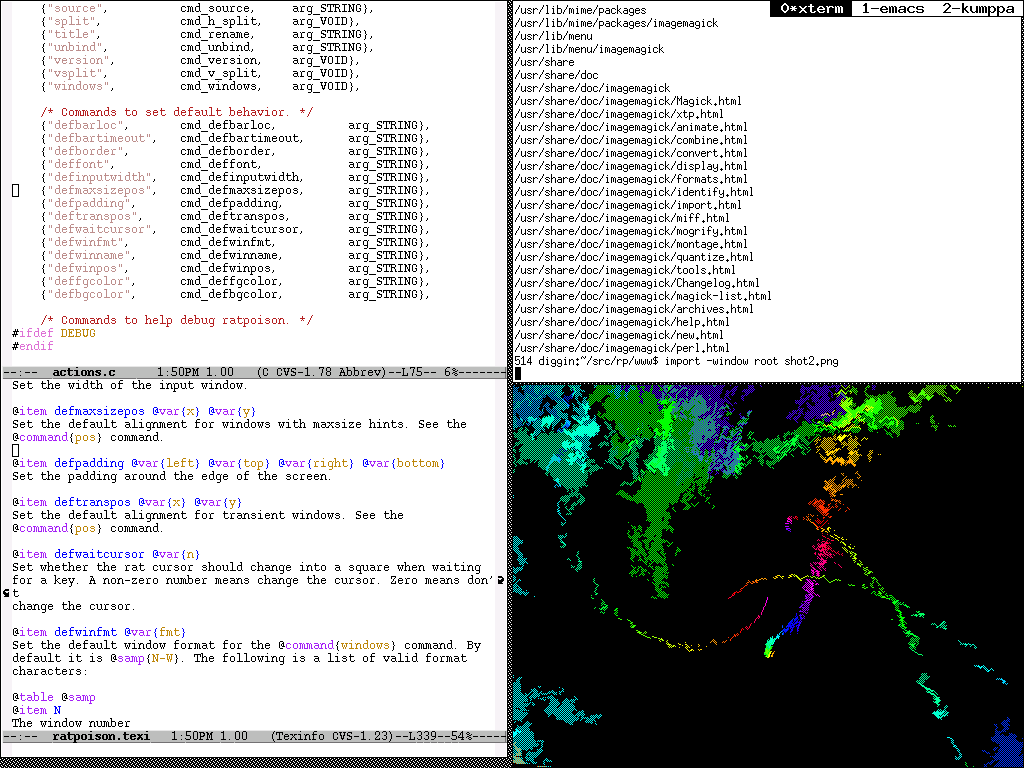 A screenshot of Ratpoison You can find more info about Ratpoison from the official website: http://www.nongnu.org/ratpoison/ Ratpoison can be used in PCLinuxOS by installing the package ratpoison through Synaptic Package Manager. dwm dwm is a dynamic tiling window manager for X11 exhibiting the principles of minimalism which is known for having influenced the development of other window managers, including xmonad and awesome. It is externally similar to wmii, but internally much simpler. dwm is written purely in C and, for simplicity, lacks any configuration interface besides editing the source code. One of the project's guidelines is that the source code will never exceed 2000 lines, and options meant to be user-configurable are all contained in a single header file. dwm is a dynamic window manager for X. It manages windows in tiled, monocle and floating layouts. All of the layouts can be applied dynamically, optimising the environment for the application in use and the task performed. 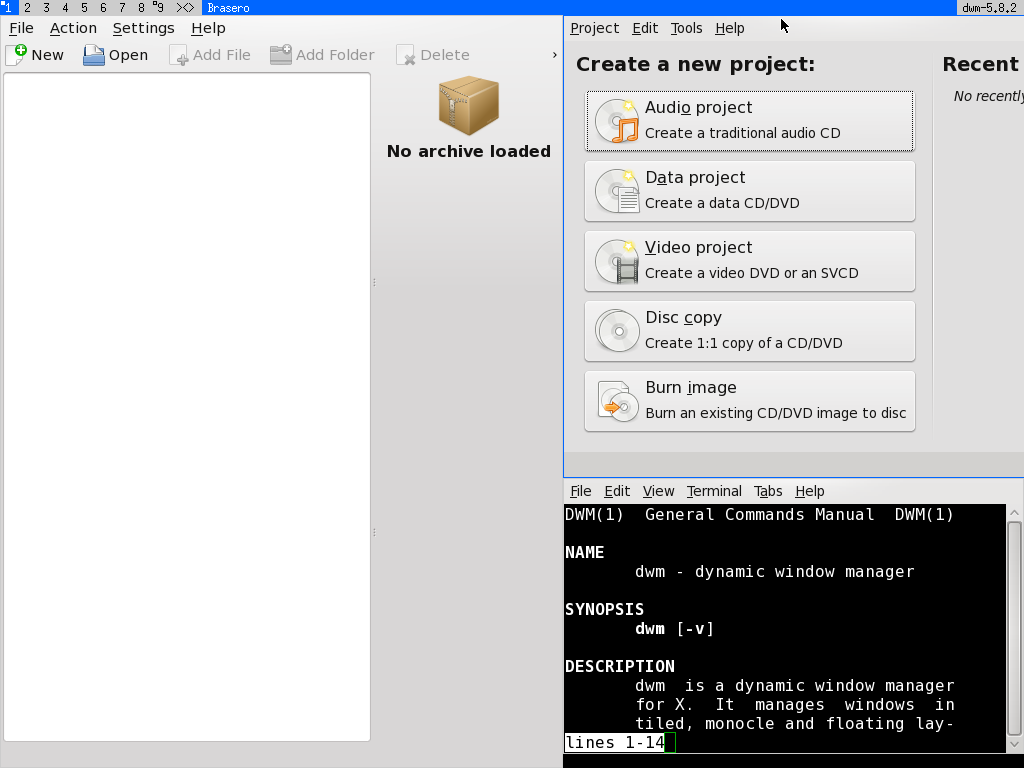 dwm on PCLinuxOS awesome awesome is a dynamic window manager for the X Window System developed in the C and Lua programming languages. The latter is also used for configuring and extending the window manager. Its development began as a fork of dwm. It aims to be extremely small and fast, yet extensively customizable and make it possible for the user to productively manage windows with the use of keyboard. awesome is highly configurable, very fast, extensible and licensed under the GNU GPLv2 license. It is primarily targeted at power users, developers and any people dealing with everyday computing tasks and who want to have fine-grained control on theirs graphical environment. 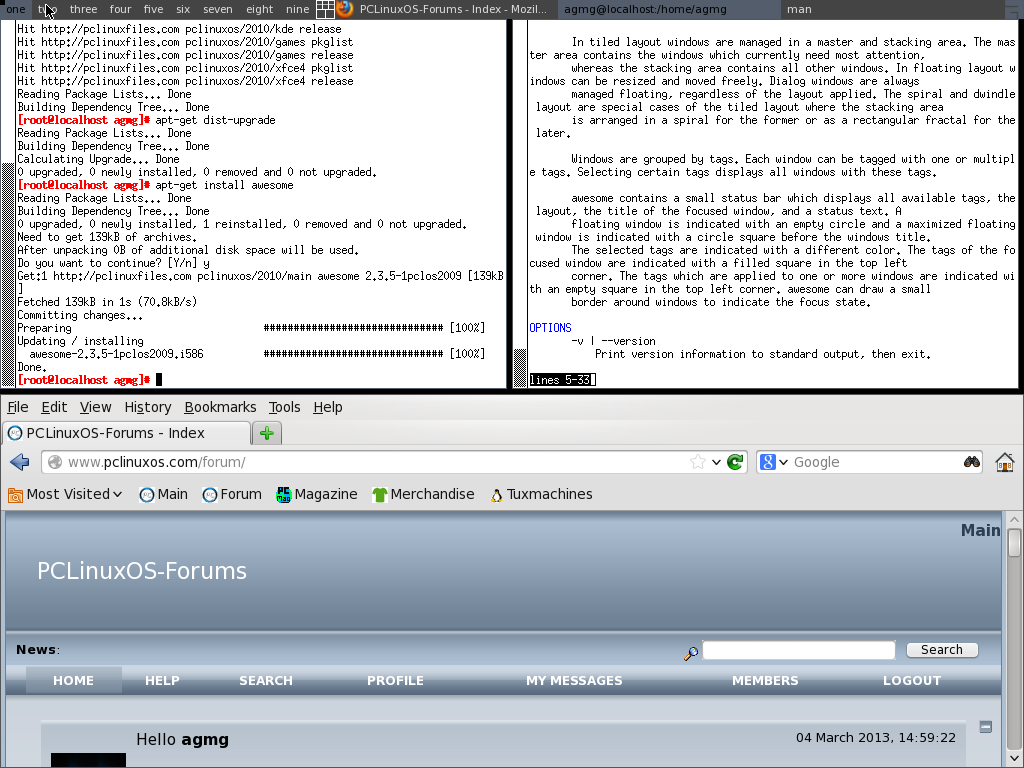 awesome on PCLinuxOS You can find more info about awesome from the official website: http://awesome.naquadah.org/ awesome can be used in PCLinuxOS by installing the package awesome through Software Package Manager. Conclusion
There are a lot more Desktop Environments and Window Managers out there, that are either forks of existing ones or are not being maintained anymore. This article can't list them all, but I hope it has covered at least the most well known and popular ones. And, of course, I hope it has given you a good idea of what "freedom of choice" really means in the world of Linux, and in the world of PCLinuxOS! |

